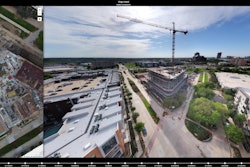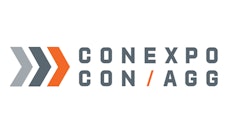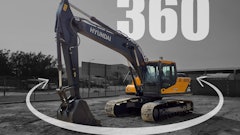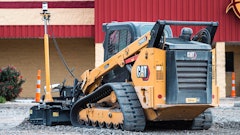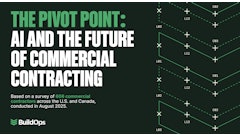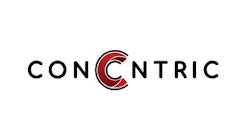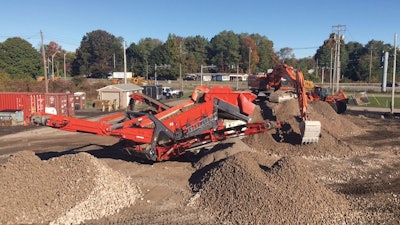
Mohawk Valley Materials is a small woman-owned business formed with strength in site clearing and forestry now aggressively pursuing ambition to double revenue by getting to know its business at a new level of detail using B2W Software. What had been a $10-million company working in its home of New York and a couple of neighboring states on federal and state site jobs, is now spread nationwide, chasing heavy civil and infrastructure projects.
“We're everywhere from California to the east coast, and do most of our revenue on federal contracts for DOD-funded work on military installations, national forests and a lot of Army Corps of Engineer work,” says Fred Brooks, chief of operations at Mohawk Valley. “The owners of the company are very open to embracing technology and growing our technology along with the business.”
Brooks has been driving technology into company practices.
“When I got here, like a lot of small companies, we were doing everything with paper and pencil and Excel spreadsheets, and there wasn't a whole lot of granular detail that went into putting estimates together. With my background as an operations manager, I need detail. I want to make sure that when we bid a job, we have the proper costs in there for equipment and labor and materials and all the back-end stuff, the overhead, profit, taxes and fuel."
Up to that point, bidding primarily federal contracts as a woman-owned small business limited the competition and left a bit of room in margins to accommodate imprecise project accounting. Mohawk Valley lost much of that cushion when it started bidding less-specialized work in new markets against larger local contractors.
Suddenly not winning bids
“We found ourselves not winning as much work,” says Brooks. “About June or July of last year we had burned through all of our backlog of work. We were having a great year, and then we kind of hit a wall because we hadn't won any more contracts.”
Coincidentally, the team was working hard to integrate B2W’s software suites in strategic segments of the company’s business to feed the B2W Estimate platform. And very quickly issued the first bids using the software.
“We started seeing that we were a lot more competitive with contractors who were operating in their home markets. Coming from New York, we know little about, say, the Texas market. We're competing against local contractors that know the market, know the labor and know the margins. Through B2W Estimate, we're able to hone in on our actual costs and put profitable margins in there and compete against local contractors.”
The new business insight quickly started revising Mohawk Valley’s understanding of individual cost elements that make up their bids.
Equipment was an issue
“We recognized that equipment was, by far, our biggest issue. In the forestry market, it's mostly specialized equipment that you can't rent, so we were able to just name our price. Once we got into the civil side of things, there's an infinite number of companies out there who already do it or can just go rent a dozer, loader, excavator and do it themselves.
“We knew what the payments were on our equipment, but there was no calculation of actual ownership and operating rate for individual pieces of equipment. So we did a few things at once, we implemented B2W Maintain, and also looked at all of our equipment fleet, and calculated precisely what our ownership and operating rates were – including repairs, maintenance, fuel, wear parts, and then loaded those into B2W estimate."
Much of Mohawk’s problem had been not capturing the full cost of the equipment in rates they were using to price construction work.
“A lot of costs were being thrown into an overhead bucket, and not really tracked at the job level. So the job may look like it's doing well, but our overhead rate was really, really high.”
Fuel invoices, repair and maintenance invoices, financing installments for underutilized machines had simply been paid, and their costs accrued to overhead instead of showing up in project ledgers. The company didn’t have an efficient way to track actual equipment costs or utilization so project managers had been making equipment decisions based on rates that were very different from the company’s actual costs.
Doing the accounting to implement B2W made a big difference.
“We calculated actual operating costs for each piece of equipment and started adding them into our bids and tracking that cost at a project level,” says Brooks. “Now we have project engineers and project managers monitoring fuel usage and the cost of repairs and maintenance, whereas before, our project cost reports were basically just labor and materials."
Most machine repairs were due to lack of maintenance because there was no system or manager driving a preventive maintenance program. They hired an equipment manager, and he and Brooks input the OEM preventative maintenance programs for each piece of equipment into B2W Maintain. Every day they get notifications of routine maintenance to be performed.
“Right now we’re at 81% planned and preventative maintenance, versus 19% unplanned, and it was the exact opposite when we first started tracking this – pretty close to 80% unplanned repairs versus 20% planned and preventative maintenance.
Lower bids, more bids
“We found that our new rates were substantially lower than the rates that we had been using in bids. And I think that was probably the biggest factor that brought us onto the playing field in a lot of these different markets. Without B2W Estimate and the effort that we put into it, there's no way we could have been that competitive, and we wouldn't have been able to bid the job to begin with.”
B2W Estimate allows Mohawk Valley to produce a lot more bids, with higher accuracy than before, at much lower overhead. Prior to implementation, executive management, including the vice president, business development manager, and chief of operations were creating bids on excel spreadsheets and it was consuming a lot of their time. Now, a chief estimator and junior estimator are able to put together more bids, with higher accuracy, in less time, at a lower cost.
“I think the biggest lesson we learned in the process is that to be sustainable – you have to make sure that all of your true costs are covered,” says Brooks. “With an Excel spreadsheet, it's very time consuming to update current labor rates and equipment rates. The tendency is to just keep using some arbitrary rates. The risk, obviously, is that you're not paying for your equipment, or you're not covering all of your labor."
Accountability drives efficiency
“Before we implemented B2W, we would bid a job with pencil and paper, and Excel spreadsheet, not really having a detailed budget for what this operation is going to cost. Then we would send some people out there with some equipment, and they would do the job. At the end of the day, we'd either think we made money or think we lost money. And then we were on to the next one.
“Now with B2W Track, for instance on our contract down at Fort Hood, the superintendent is logging his time and equipment and quantities daily. He's looking at numbers we expect on our schedule, and it’s motivation for him to do better because there's incentive for him at the end of the year to perform. So he's able to see his daily cost. Plus it's easier for management to see the production and make quicker changes to our operations, rather than just get to the end of the job and hope that we made money.
A couple of Mohawk Valley project engineers verify quantities every day and that data stream drives monthly invoices to the company’s clients, so the information has to be correct.
“A couple of the operations down at Fort Hood were expected to take eight or nine months. You give a guy nine months to do something, he's gonna take ten. But if you incentivize him based on performance, and he's able to see his performance on a daily basis . . . well, those operations are now going to be done in four or five.
“If you don't give them that kind of visibility, they're just gonna go out there and collect the paycheck. With bonuses and promotions tied to their performance, now they're able to have some accountability and responsibility for delivering.”






